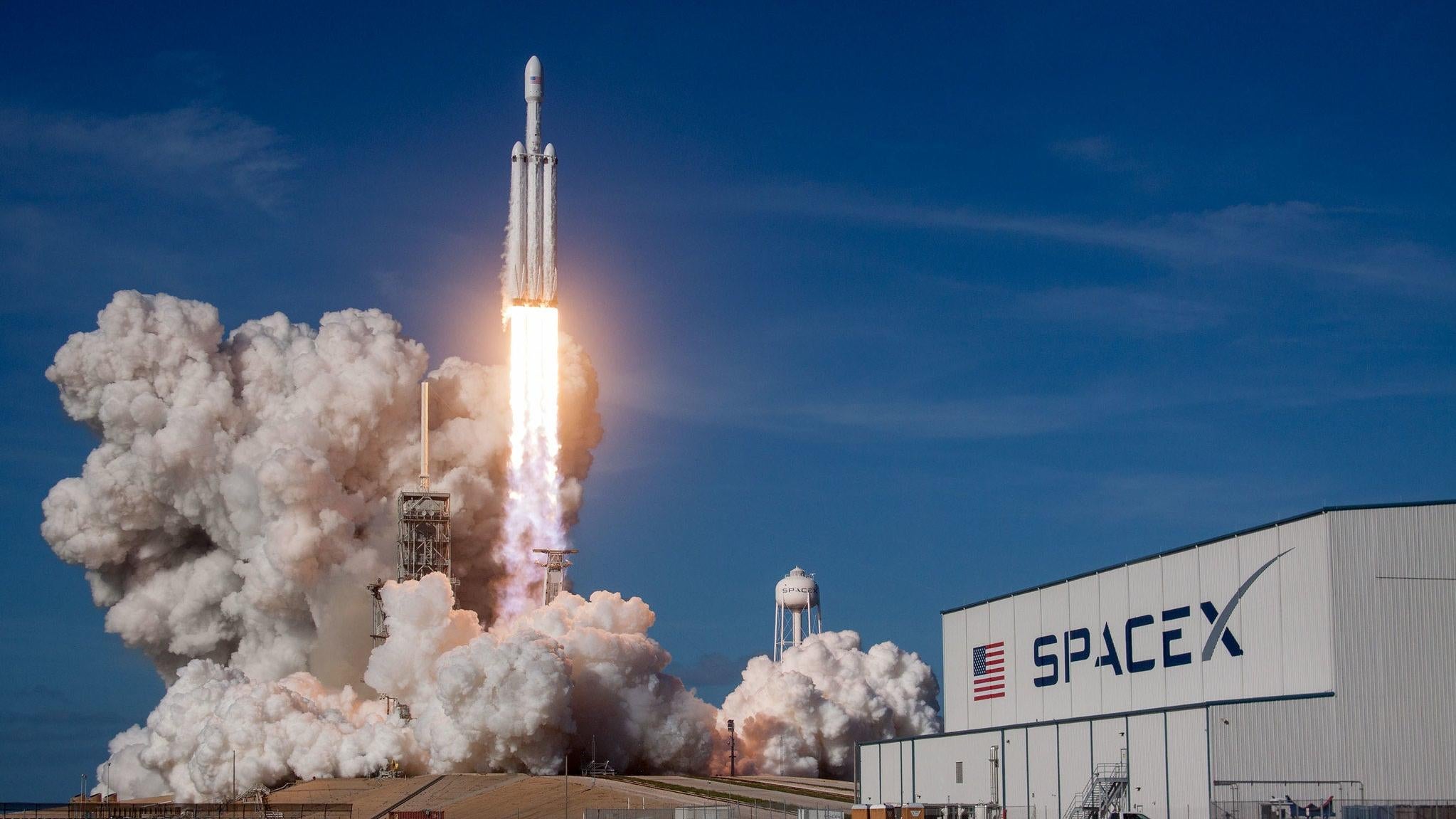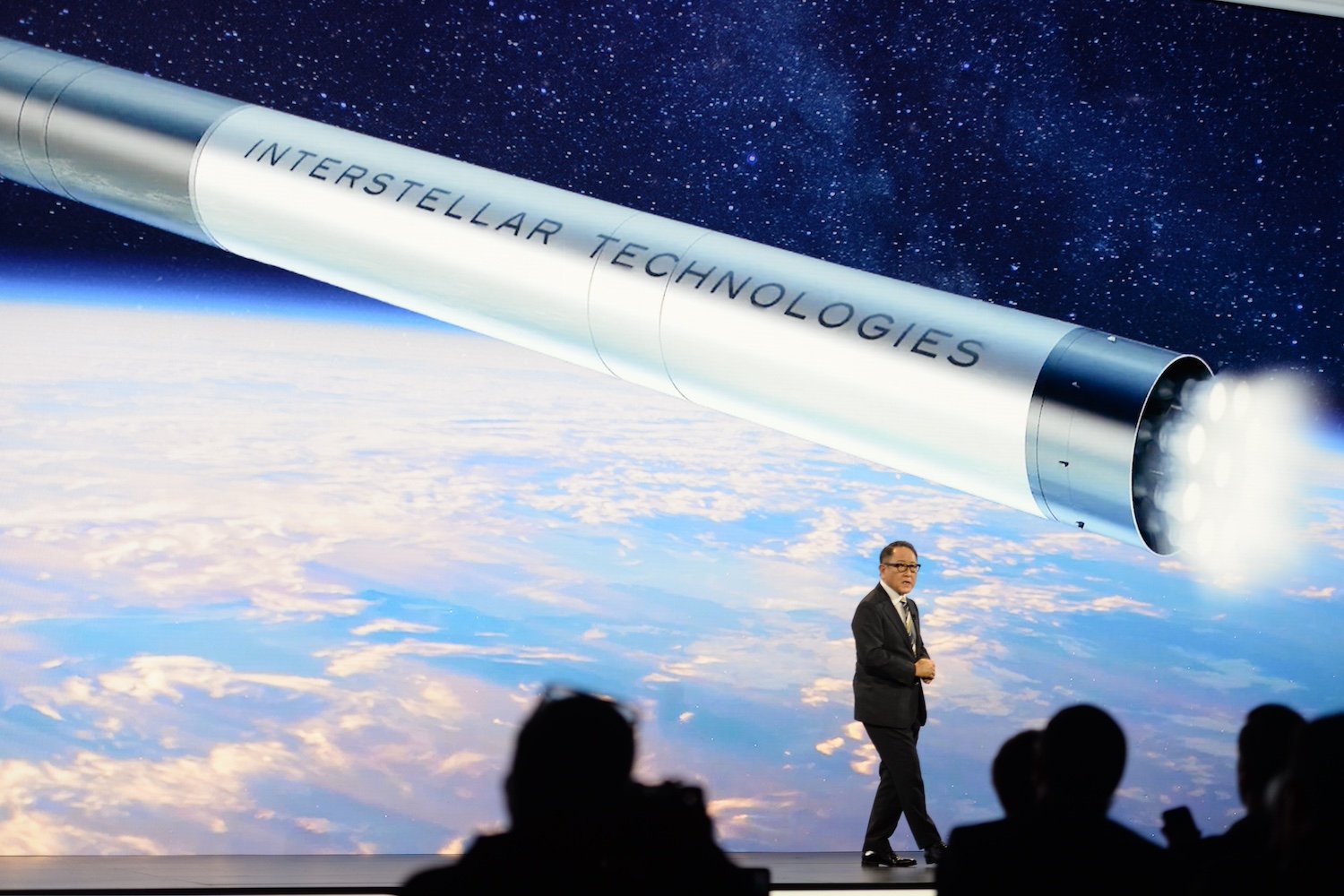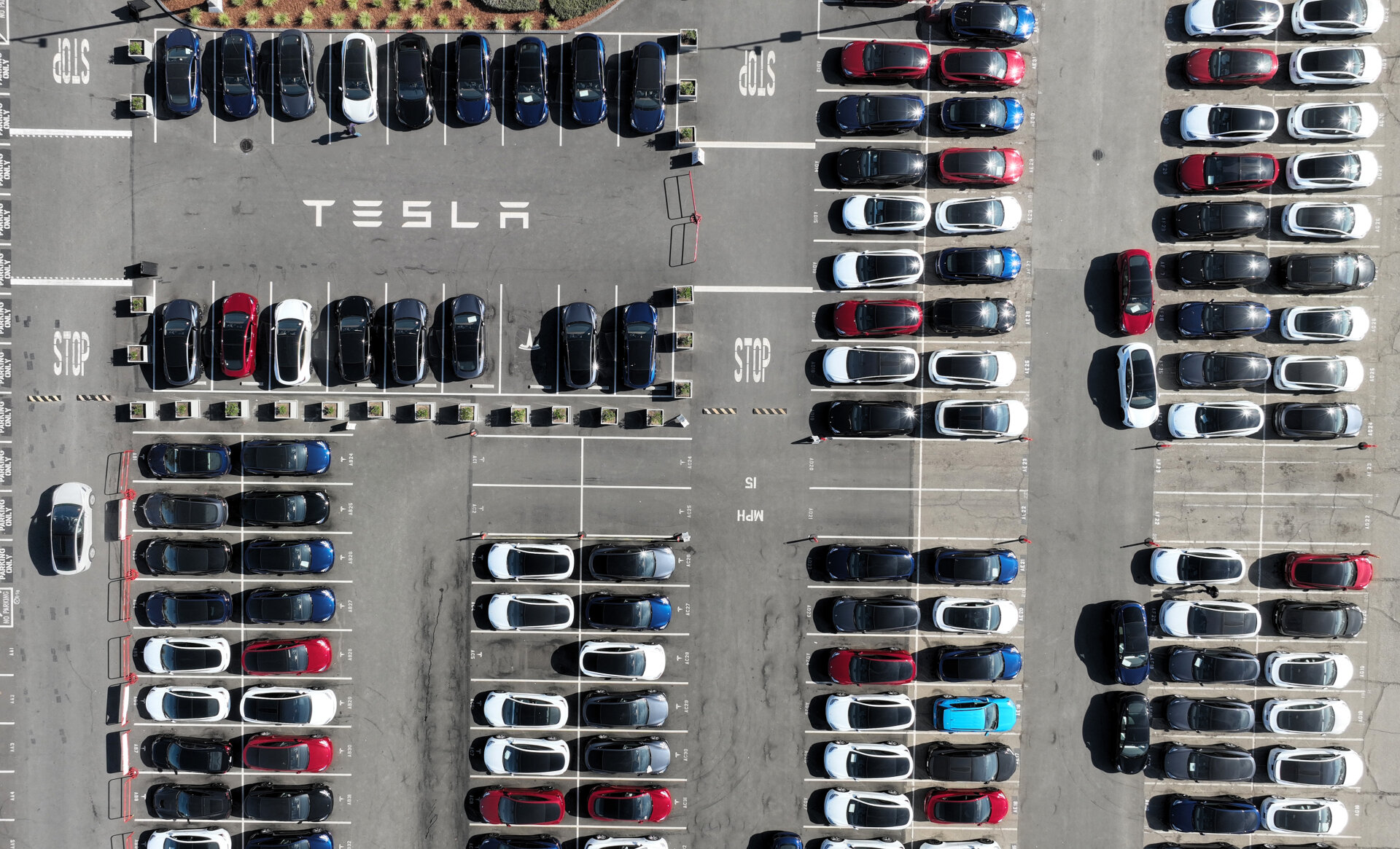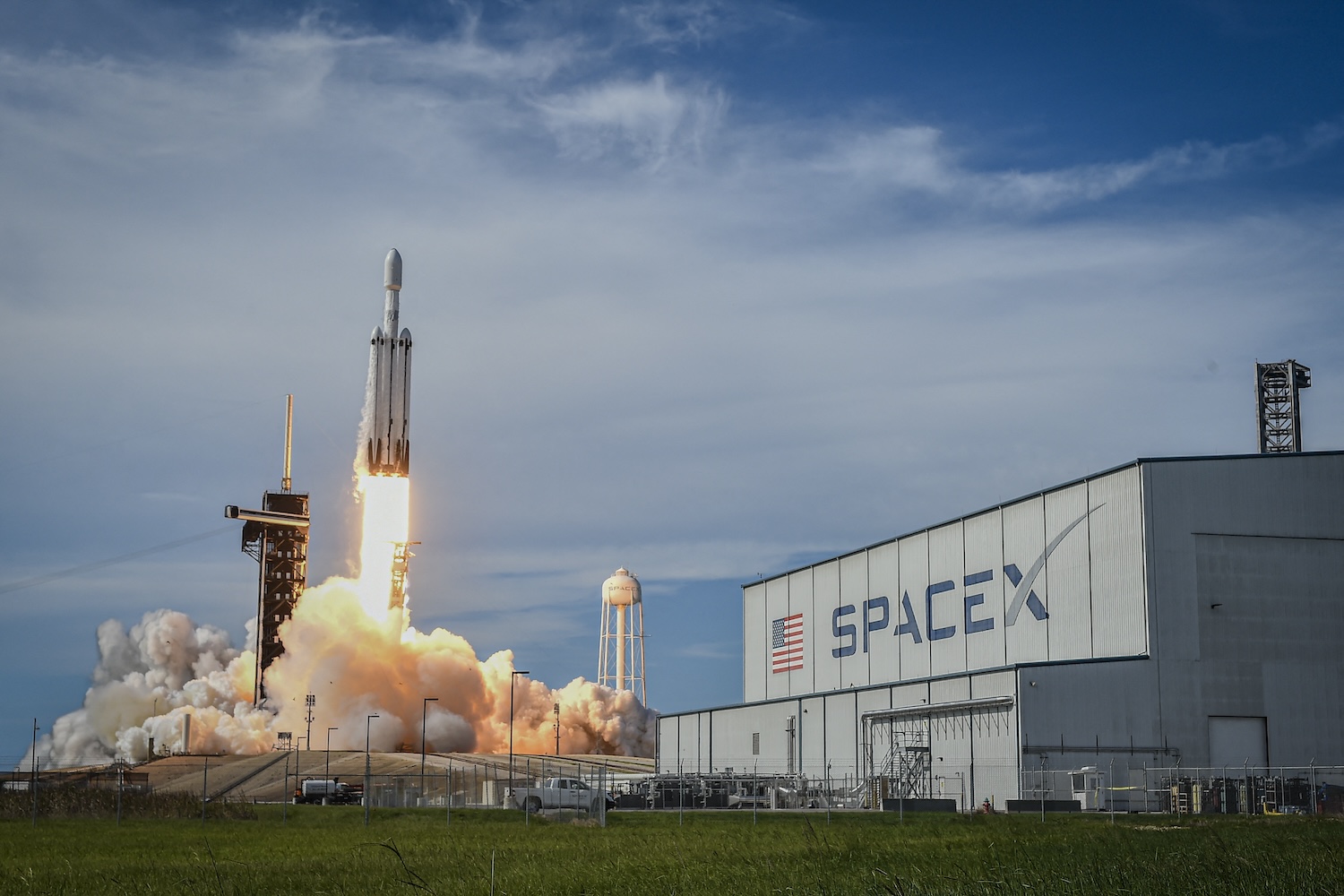For the first time since June 2019, we’ll get to see a SpaceX Falcon Heavy take to the skies. The U.S. Space Force has chartered a ride with the heavy-lift launch vehicle, but the details of this defense mission are a bit vague.
The Falcon Heavy is scheduled to launch on October 28 from Launch Complex 39A at Kennedy Space Center, according to Next Spaceflight. The same pad was used on Wednesday to launch the Crew-5 mission to the International Space Station, but SpaceX will now configure the Florida facility for the upcoming launch of its Falcon Heavy. No launch time has been specified.
The mission, known as USSF-44, will attempt to deploy two U.S. Space Force payloads to geosynchronous orbit (GEO). It was supposed to blast off in late 2020, but the mission was delayed on account of unspecified payload issues, which have since been resolved, as reported in Spaceflight Now. USSF-44 will be the first National Security Space mission using the Falcon Heavy, says Space Force. And as Next Spaceflight points out, this will be SpaceX’s first mission to fly directly to GEO.

The smaller of the two USSF-44 payloads is known but the other remains a mystery. The known payload is the TETRA-1 satellite built by Boeing subsidiary Millennium Space Systems. TETRA-1, commissioned by Space Force in 2018 and completed in 2020, is a prototype GEO satellite for testing procedures and tactics that will inform the development of future satellites. The prototype will work 22,236 miles (35,786 kilometers) above the surface, according to Millennium Space.
The unidentified Space Force payload is likely much larger than the tiny TETRA-1 satellite, as the combined mass of the two payloads is expected to be around 8,200 pounds, according to Spaceflight Now. Hence the need for SpaceX’s Falcon Heavy, as opposed to the company’s medium-lift Falcon 9.
Falcon Heavy is a bolstered amalgamation of three Falcon 9 rockets and it remains the company’s most powerful operational lift vehicle. Fitted with 28 Merlin engines, the rocket generates more than five million pounds of thrust at liftoff and can deliver 141,000 pounds of cargo to low Earth orbit. Falcon Heavy was originally designed to carry humans to space, but SpaceX has shifted that future responsibility to its Starship rocket, currently in development.
For USSF-44, the Falcon Heavy will incorporate two newly produced side boosters and a new center core. That these are new components is not necessarily an advantage, as flight-proven boosters are increasingly being seen as a bonus in terms of reliability. Spaceflight Now says the two boosters will attempt vertical landings at Cape Canaveral Space Force Station, but the center core will not be recovered.

The Falcon Heavy debuted on February 7, 2018, when it famously delivered Elon Musk’s personal Tesla Roadster and its inanimate Starman passenger to space. A second launch was performed on April 11, 2019, and a third on June 25, 2019.
That’s been it for the 230-foot-tall (70-meters) rocket, but this heavy-lift vehicle is about to get busy. USSF-44 is the first of six Falcon Heavy missions in the next 12 months, with upcoming launches including Space Force’s USSF-67, the launch of the Jupiter 3 commercial broadband satellite, and NASA’s Psyche probe to investigate a metal-rich asteroid, the latter of which could be delayed due to ongoing hardware issues.














